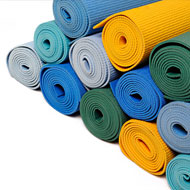Procedure for Cleansing your Nasal Passage (Neti Pot Solution)
With increasing pollutants and effluents in the air around us, it has become even more important to take care of ourselves. Our body often responds to pollutants by triggering an allergic reaction.
If you want to control the intensity and recurrence of these infections, you may have to hydrate your nasal tissues regularly. This ensures that your nasal passages are free of mucus, pollutants, and other allergens that may cause infections and allergies. For irrigating the nasal passages and flushing off these pollutants and irritants, you can use a nasal wash or a saline solution.
This solution can be used with the help of a small teapot-shaped instrument known as neti pot. Therefore, the nasal wash is often also known as neti pot solution.
What is Nasal Saline Irrigation?
Nasal saline irrigation is a process through which the irritants, phlegm, and pollutants are flushed out of the nasal passage with the help of a saline solution. The saline solution also hydrates the nasal tissues so that they remain healthy and moist. Regular nasal irrigation helps you reduce the chances of getting different kinds of infection, being much better than other decongesting methods such as antihistamines, nasal sprays, decongestants and humidifiers.
Preparing the neti pot solution, however, can be slightly tricky. The neti pot solution ratio has to be perfect in order for it to work properly. You can choose to create a homemade neti pot solution or get a ready-to-use one from the drug store. Most drug stores have various brands of over the counter saline sprays. These sprays can be used for nasal irrigation with a neti pot.
To make a neti pot saline solution, you need water and non-iodized salt, also referred to as neti pot salt. This can then be mixed together with additional ingredients such as baking soda. However, using baking soda is not a necessity. There are different kinds of recipes that can be used to create the perfect saline solution.
Neti Pot Solution Recipe
What you will need:
- 250 ml warm water
- 1/4 tsp sea salt/non iodized salt/rock salt/kosher salt
- 1/4 tsp baking soda (optional)
Method:
For the perfect neti pot solution recipe, simply mix all these ingredients together in a clean glass jar or a pot.
Ideally, you should create the saline wash fresh. Some people store the saline water and use it at a later stage, but try not to do that. Storing the nasal wash for a long period can cause it to get contaminated. When you reheat it and use it after storing, there is a greater chance of getting infected with parasites and other contaminants.
For mild allergies and congestion, you can use a store bought saline solution and use it with the neti pot once or twice a week. However, it is better to use homemade saline solutions as opposed to store bought over the counter solutions, as they may have a preservative known as benzalkonium chloride. This chemical may further irritate the nasal membranes and worsen the allergic symptoms.
Administering Nasal Wash
Using a nasal wash is usually very simple.
- Fill up your neti pot or saline spray bottle with the saline solution and lean over the sink with your head tilted sideways.
- Insert the spout of the neti pot into one nostril and gently pour the water in.
- As you inhale the water, it will come out of the other nostril, after cleansing your nasal passages.
- Repeat the same procedure with the other nostril. Blow your nose after you are done to remove remaining mucus and water.
Maintaining proper hygiene with the neti pots is very important. Always use clean water for making the solutions. You may use distilled water or boiled water to avoid chances of parasitic infection.
Read more articles from the General Discussion Category.
 Find Pose
Find Pose

